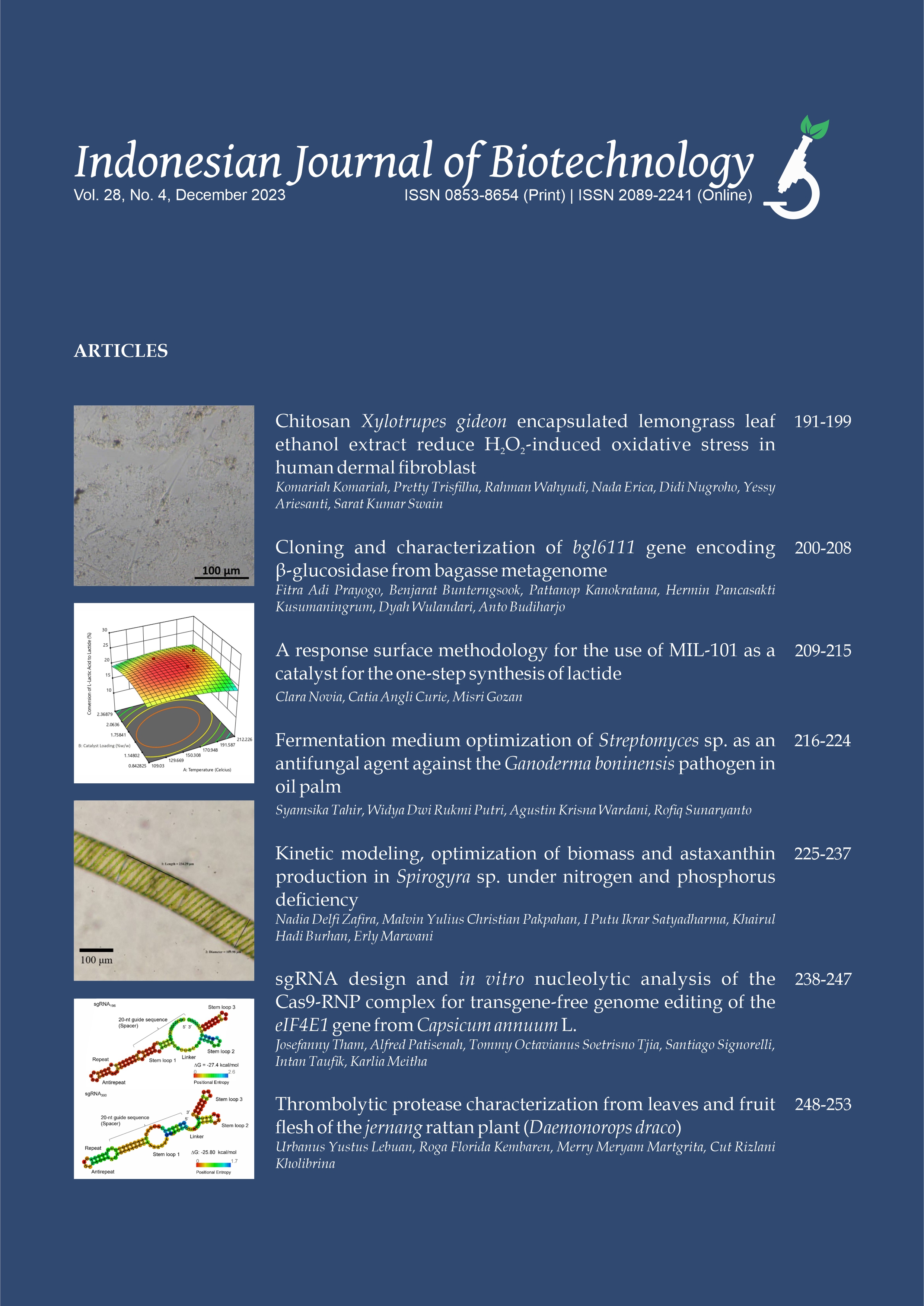In vitro Antiplasmodial Activity and Cytotoxicity of Vincadifformine and Its Semisynthetic Derivatives
M. Mustofa(1*), Michèle Mallié(2), Alexis Valentin(3), Guy Lewin(4)
(1) Department Pharmacology & Toxicology and Center for Tropical Medicine, Faculty of Medicine,Gadjah Mada University, Yogyakarta 55281, Indonesia
(2) Department of Immunology and Parasitology, Faculty of Pharmacy, University of Monpellier I
(3) Department of Immunology and Parasitology, Faculty of Pharmacy, University of Monpellier I
(4) Department of Pharmacognocy, Center for Pharmaceutical Study, Châtenay Malabry, France
(*) Corresponding Author
Abstract
An indole alkaloid with aspidospemane structure possessing a potential antiplasmodial activity, vincadifformine, has been isolated from Aspidosperma pyrifolium Mart. Moreover, 10 derivatives were prepared from the vincadifformine. The study was conducted to evaluate the in vitro antiplasmodial and cytotoxic activity of the vincadifformine and their semisynthetic derivatives. The in vitro antiplasmodial activity was evaluated on Plasmodium falciparum chloroquine-resistant (FcM29) and –sensitive (Nigerian) strains after 24-h and 72-h incubation, while cytotoxic activity was estimated on Hela cells and Cytotoxicity Index (CI = IC50 on HeLa cells/IC50 on FcM29 strain) was calculated to evaluate the safety of tested compounds. Experiment results showed that two compounds (4 and 8) exhibited good antiplasmodial activities in comparison with parent compound, vincadifformine and other tested compounds with IC50 ranging from 5.3 to 12.8 µM on FcM29 strain and 11.4 to 24.0 µM on Nigerian strain. In addition, the CI of two compounds were also lower after 24-h incubation (CI, 2.0 and 4.8) than that of after 72-h incubation (CI, 9.5 and 11.5). Further study will be conducted to evaluate quantitative structure-activity relationship (QSAR) in order to design new antimalarial drugs.
Keywords
Full Text:
PDFReferences
Desjardins, R.E., Canfield, C.J., Haynes, J.D., and Chulay, J.D., 1979. Quantitative assessment of antimalarial activity in v i t r o b y a s e m i a u t o m a t e d microdilution technique. Antimicrob. Agents Chemother., 16, 710-718.
Jensen, J.B., 1978. Concentration from continuous culture of erythrocytes infected with trophozoids and schizonts of Plasmodium falciparum. Am. J. Trop. Med. Hyg. 27, 1274-1276.
Keawpradub, N., Kirby, G.C., Steele, J.C. a n d H o u g h t o n , P . J . , 1 9 9 9 . Antiplasmodial activity of extracts and alkaloids of three Alstonia species from Thailang. Planta Med. 65 (8), 690-694.
Lambros C. and Vanderberg J.P., 1979. Synchronisation of Plasmodium falciparum erythrocytic stages in culture. J. Parasitol. 65, 418-420.
L e w i n , G . , 1 9 9 5 . C y t o t o x i c i t y o f aspidospermane indole alkaloids with a modified tryptamine chain. J. Nat. Prod., 58 (7), 1089-1091.
Lewin, G., Hocquemiller, R., Schaeffer, C., Lambert, P.H., Leonce, S. and Pierre, A., 2002. Cytotoxicity of 6,16- dissubstituted analogues of (-)- vincadifformine. Bioorg. Med. Chem. Lett., 12 (3), 371-374.
Li, X. and Rieckmann, K., 1992. A bioassay for derivatives of Qinghaosu (artemisinin). Trop. Med. Parasitol. 43, 195-196.
Mitaine, A. C., Mesbah, K., Richard, B., Petermann, C., Arrazola, S., Moretti, C., Zèches-Hanrot, M. and Le Men- Olivier, L., 1996. Alkaloids from Aspidosperma species from Bolivia. Planta Med. 62, 458-461.
Trager, W. and Jensen, J., 1976. Human malaria parasite in continuous culture. Science 193, 673-675.
Valentin, A., Benoit-Vical, F., Moulis, C., Stanilas, E., Mallié, M., Fourasté, I. and Bastide, J.M., 1997. In vitro antimalarial a c t i v i t y o f p e n d u l i n e , a bisbenzylisoquinoline from Isopyrum thalictroides. Antimicrob. Agents Chemother. 41, 2305-2307.
Wright, C.W., Allen, D., Cai, Y., Phillipson, J.D., Said, I.M., Kirby, G.C. and Warhurst, D.C., 1992. In vitro antiamoebic and antiplasmodial activities of alkaloids isolated from Alstonia angustifolia roots. Phytother. Res. 6, 121-124.
Wright, C.W., Bray, D.H., O’Neill, M.J., Warhurst, D.C., Phillopson, J.D., Quentin-Leclercq, J. and Angenot, L., 1994. Antianoebic and antiplasmodial activities of alkaloids isolated from Strychnos usambarensis. Planta Med. 57(4), 337-340.Article Metrics
Refbacks
- There are currently no refbacks.
Copyright (c) 2015 Indonesian Journal of Biotechnology









